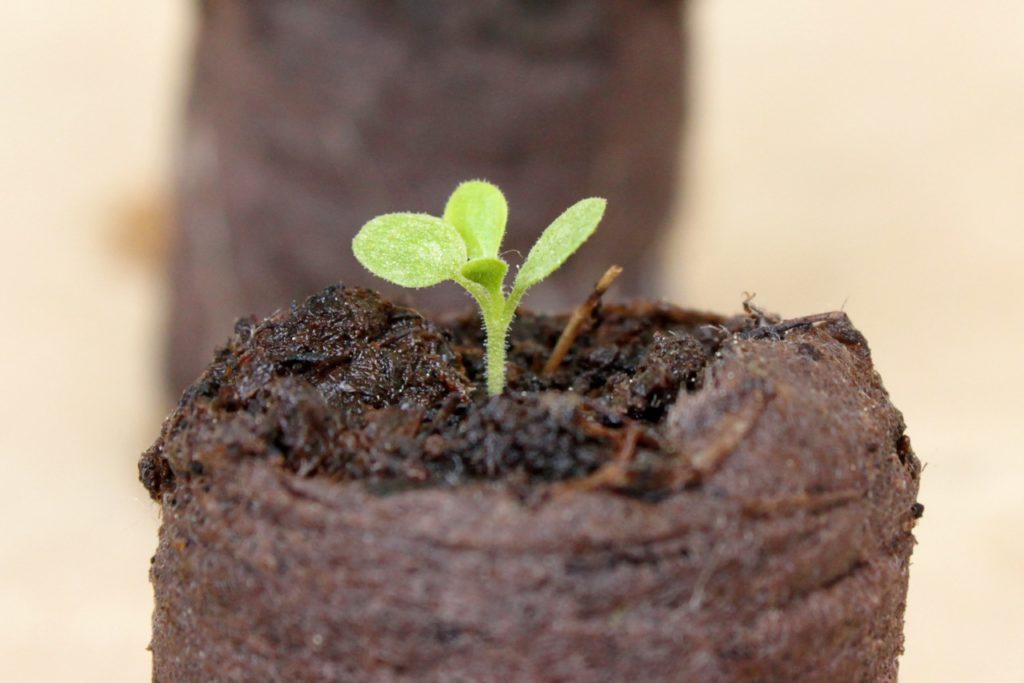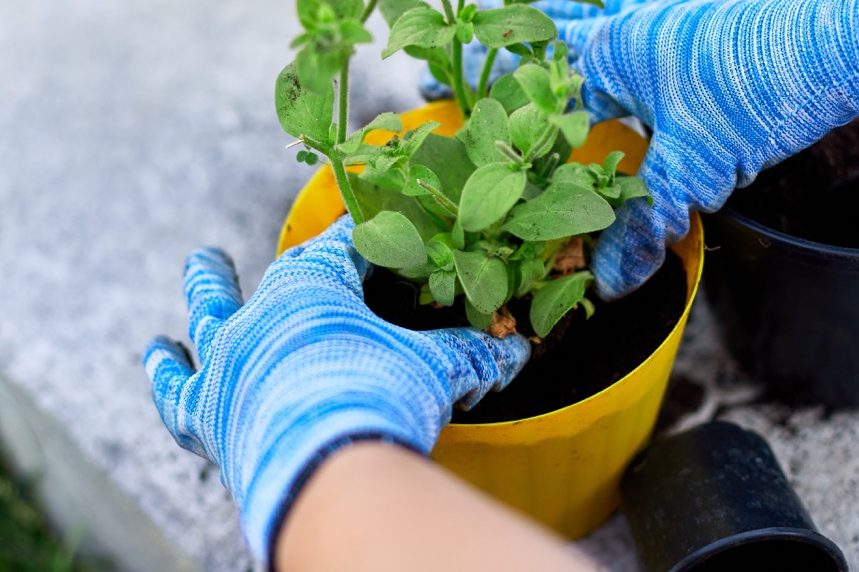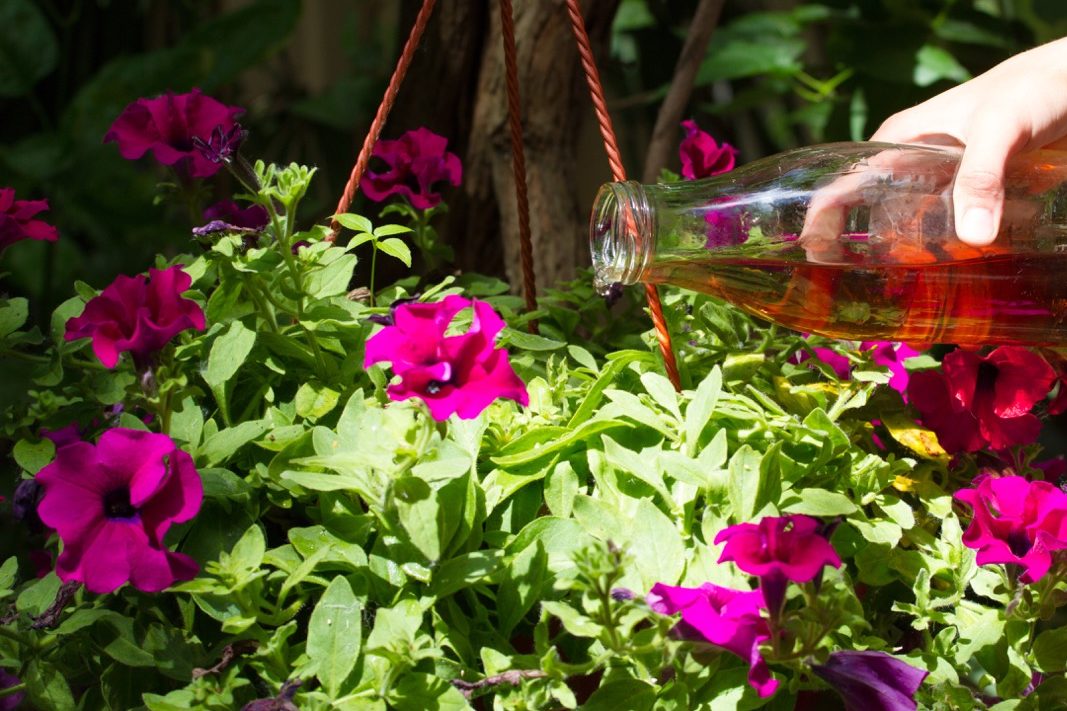Follow These 7 Tips From Gardeners For Perfect Potted Petunias

ANNUALS > PETUNIA > CONTAINERS
Reviewed By PETER LICKORISH

Peter is a Horticulture Lecturer and self-employed Horticulturist, with a passion for diverse areas of the industry - from garden design to the science behind plant growth and propagation. He has completed the Royal Horticultural Society’s Master of Horticulture (MHort) Award and lectures on RHS courses at Bedford College.
IN THIS GUIDE
PETUNIA GUIDES
Container Growing
Deadheading
Hanging Baskets
Legginess
Overwintering
Pruning
Sowing
Surfinia
Petunias are always a favourite among British gardeners.
Boasting cheerful blossoms, a delicate aroma and lengthy blooming seasons, it’s not difficult to see why they’re a fixture in beds and borders throughout the country.
However, while petunias perform impressively when planted in the ground, they can be just as easily cultivated in containers too.
In fact, growing them in pots has the added advantage of being able to move them indoors during winter, which can help them to survive until the next spring.
Although growing petunias in pots is remarkably similar to caring for them in the ground, there are a few key differences to consider.
| Difficulty | Easy |
| Equipment Required | Pots, potting mix, plug plants or petunia seedlings, watering can, fertiliser |
Can You Grow Petunias In Pots?
Whether you plan to place your petunias on a patio, balcony or in your home, growing them in pots is not only effective, but also easy to do.
“By planting in a container, you allow most petunias to perform what I think is their best trick: their ability to trail,” shares Master Horticulturist Peter Lickorish.

“They effortlessly fold themselves over the corner of containers. Whilst cascading or trailing types are best at this, even the more compact plants have a lovely ability to lap over the edge of their pots.
“I always choose the single-flower types, rather than those with ruffled double blooms, to make life easier for our hard-pressed bees.”
Just be mindful that soil in containers can dry out more quickly than soil in the ground outdoors, so you’ll need to factor this into your plans when caring for them.
1) Choose A Large Pot With Good Drainage
The container in which you plant your petunias can be made from any material you like, whether that be plastic, terracotta, concrete or something else entirely.
The only demand they do place on you is to ensure that there are plenty of drainage holes in the bottom of the container, since waterlogged soil is a recipe for disaster.

You should also choose a container that’s large enough to accommodate your petunias.
While the exact dimensions required will depend on the type of petunia you pick and the number of plants you wish to incorporate in the same pot, a general rule of thumb is to give each petunia a diameter of 5-10cm free space.
2) Use Nutrient-Rich Compost
Petunias are generally quite easy-going in terms of their soil demands, but they do prefer terrain that is rich in organic content.
For that reason, it’s a good idea to select compost with high nutrient levels and no peat content, or you can enrich your soil with well-rotted manure or organic matter.

Petunias also demand excellent drainage.
They enjoy a thorough soaking when being watered, but they’ll also perform better if the surface of their soil is allowed to dry out completely.
As such, you might want to consider adding stones, sand or a perlite mix to your container to improve its drainage qualities.
3) Grow From Plug Plants Or Seed
If you’re growing your potted petunias from seed, begin the process a few weeks before the last frost is forecast.
Start with a seed tray and eventually move them on into their final container at the correct spacing.
You must ensure they get plenty of indirect sunlight.
This means sprinkling the dust-like seeds onto the surface of the soil and not covering them up at all.
This will allow them to absorb the UV radiation and germinate more effectively.

You can also aid this process by covering the pot or seed tray with clingfilm or another plastic substance to keep humidity and moisture in.
At this stage, they won’t tolerate direct sunlight, but neither will they enjoy temperatures below 12-15°C.
Keep them in a warm, well-lit environment and ensure the soil stays moist.
Once sprouted, you can remove the plastic and position the petunias on a sunny windowsill.
It is important the plastic is removed as soon as seedlings are spotted, to prevent rot.
4) Pot Up In Spring
After the petunias have achieved sufficient growth (several centimetres in height and at least 2 sets of leaves), you can thin them out and move them to their final location providing, of course, that all chance of frost has passed.
If the frost risk persists, prick them out into small individual pots or module trays, until they can go in their final container.
On the other hand, you may wish to buy small plug plants from a nursery to bypass the germination stage.
Very small plug plants should be planted in small pots or module trays before moving on to their final container, to bring them on.
Otherwise, larger petunia plugs can be potted up at any point during the growing season, but I find it’s best to do so in spring, just after the last frost has passed.
This will give their root systems as long as possible to establish themselves and also allow you to enjoy their blooms for a longer time.
5) Watch Out For Overcrowding
As covered briefly above, the exact number of petunias which will fit comfortably in a pot depends on the type you have bought and the size of your container.

Generally speaking, you can crowd quite a few bedding plants into the same space to achieve an impressive profusion of flowers during the blooming season.
However, with the broad habit of petunias, it’s usually not a good idea to plant more than 3 plants in the same 30cm pot, since this can lead to overcrowding and could inhibit the overall growth and blooming performance of the plants.
6) Allow The Pots To Dry Out
As I touched on previously, petunias will perform best when the top of their soil is allowed to fully dry out.
This usually occurs on a weekly basis, but may happen much more often during summer.
To check whether your petunias need a drink, you can insert one of your fingers into the top of the soil.
If the top 2-3cm is dry, treat the plant to a thorough soaking and make sure that excess water drains freely through the holes in the bottom of the pot.

Remember that container soil will dry out more quickly than that found in the ground.
The timing and placement of the water is just as important as the amount.
To avoid scorching the leaves, water the soil directly in the morning or evening and try not to get the foliage wet, since this can encourage fungal development.
7) Use A High-Potash, Liquid Feed
Incorporate a liquid fertiliser into your care routine, administering it once a fortnight during the summer months.
Choose a product that’s high in potash, such as fertilisers intended for use on tomatoes.

You can switch to one high in nitrogen later in the year if your plant is looking tired or stressed.
However, stop all fertilisation once the blooming season is over, as this is pointless if you’re treating petunias as annuals and counter-productive if you plan to overwinter them.
Pruning back the plant is also a good idea to keep it looking trim and tidy and to promote bushier and healthier growth.
This can be done effectively between major flushes of flowers, reducing the plant by a third to a half.
Deadheading spent flowers will also divert vital energy supplies towards new blossoms and can extend the flowering season for as long as possible.

